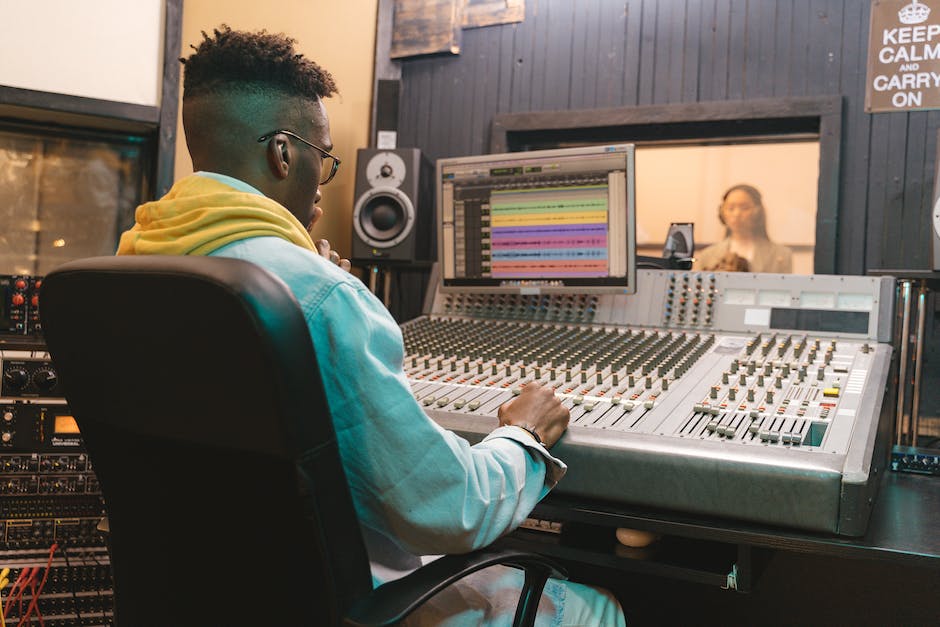In the domain of sound recording and reproduction, perfect stereo imaging stands as a testament to an audiophiles’ perfection. Achieving this unparalleled feat takes us deep into the labyrinth of sound manipulation techniques and understanding beyond the surface-level notion of sound reception. We delve into the essence of stereo imaging, which is fundamental to shaping spatial locations of the sound source, both laterally and depth-wise. The subjects of panning techniques and the utilization of Equalization (EQ) which, when harnessed efficiently, craft a stereo image par brilliance, will be explored. These distinct elements collaborate to generate a sound-stage that allows the listener to perceive the position of each instrument, rendering an incredibly immersive and enjoyable experience.
Understanding Stereo Imaging
In the vast universe, where melodies meld with harmonies and beats blend into rhythms, there lives an elusive yet powerful entity fondly known as ‘stereo imaging’. It weaves an intangible tapestry within the harmonious realm of music, turning simple auditory elements into a symphony that resonates within one’s soul. The art of stereo imaging isn’t restricted to mere frequencies, but as broad as the sonic universe that stretches beyond the horizons of our aural perceptions.
Boldly put: stereo imaging is the science & art of creating width, depth, and height in a musical track. Brilliant, isn’t it? It’s comparable to setting up an orchestra on stage. Each instrument finds its place, contributing to the entire sonic panorama. It’s about crafting a three-dimensional audio landscape that allows listeners to immerse themselves fully in the music – fostering a deeper connection and elevating their aural journey.
But why, one may question, is stereo imaging of overwhelming significance within the domain of audio recording? Why does it command respect in rehearsals rooms, professional studios, and digital audio workspaces around the globe? Brave your sense of curiosity, and step into the enlightening path leading to the secrets of stereo imaging.
Stereo imaging widens the perspective of music. It evolves the linear sound into an expansive panorama, where elements occupy their own specific space. When these individual components merge, they form a richly layered soundscape that immerses the listener entirely. Ever been at a live concert, feeling the pulse of the bass across the far left, the sensational splashes of cymbals far right, and the mesmerizing voice of the lead singer captivating the center stage?. That, dear music admirers, is the power that stereo imaging wields.
Moreover, stereo imaging prevents frequency clashing by granting each instrument its private space within the mix. Picture a symphony orchestra, where every instrument, from the soaring violins to the majestic percussions, unfolds its magic without stepping on each others’ musical toes. Harmony, it seems, isn’t exclusive to the notes we play but also rests in how we arrange these notes in an auditory space.
Mind you; stereo imaging isn’t the wild wild west. Anarchy in the audio realm can, at times, prove to be enchanting, yet it’s essential to maintain balance and avoid excessive separation between channels. A well-executed stereo image retains coherence, allowing a seamless musical experience, irrespective of the listener’s location.
Mastering stereo imaging doesn’t merely impact the way music is heard but profoundly influences how it is felt. It transcends the barriers of physical dimensions to reign in the awe-inspiring expanse of human emotions. It’s the guiding compass that ensures every beat, every note, every rhythm finds its rightful home within the auditory landscape, thus enhancing the psychedelic journey music ushers us into.
In the end, it all resonates into that old saying by Plato; Music gives soul to the universe, wings to the imagination, flight to the imagination. And it’s the precision of stereo imaging that turns these imaginary flights into soul-stirring, immersive experiences.
That, brave music explorers, is the essence of stereo imaging in the harmonious universe we dearly adore. Explore its power, sharpen its skills, and let the magic of stereo imaging steer the musical vessel towards uncharted realms of sonic excellence.

Panning Techniques
Amplify your Art: Panning Practices to Perfect Stereo Imaging
Music; a universal language that transcends boundaries, unites people and incites emotion, is an intricate tapestry woven with threads of silence and sound. It’s a symphony stirred by a multitude of elements, and a not-so-widely acknowledged and often unsung hero behind this cosmic sound–stereo imaging. A well-executed stereo image paints a vivid picture in the listener’s mind using instruments as colors; it’s an essential ingredient in creating memories that are anchored in sound and emotion. But, it’s also a technique that delves into the realm of psychoacoustics, seemingly complex, but profoundly profound.
Driving the essence of music’s universality, we embark on divulging the best panning practices for impeccable stereo imaging, sharing insights gathered from years of ardently exploring sonic perimeters in the most immersive musical gatherings from Woodstock to EDC. Though we’ve explored stereo imaging’s fundamentals in previous discussions, we are excited to delve deeper into this nuanced depiction of sound space.
Firstly, understanding panning is vital. Imagine a space that stretches from your left to your right ear—an imaginary axis—which is your canvas, and the sound source, your brush. Panning allows you to place sounds at different locations in this imaginary stereo field, creating a sense of width, depth, and height. Panning is your palette of sound wherein every sound source holds a distinct position, just like every musician in an orchestra.
Decision-making is crucial in panning. It’s not randomly throwing sounds into the stereo field but instead, it’s a careful curtailment of the stereo spectrum. Working with low-frequency sounds, it’s advisable to keep them centered, much like the bass player standing near the drummer in a live concert. Bass frequencies have omnidirectional properties, and positioning them towards the center prevents muddying the soundstage.
Mid-frequency elements like vocals, guitars, or keyboards require panning to a position that creates a harmonic balance—mimicking their positioning just like in a live performance on stage. The golden rule is to perceive the stereo field as a live concert stage. Pan your sounds in accordance with the positioning of musicians on stage to create optimal musical coherence.
In ensuring a diverse yet harmonious blend, it’s critical to prevent frequency clashing. It’s like ensuring no two instrumentalists programmatically crowd each other. The idea is to give each instrument its unique place in the spectrum.
Above all, remember that your tools shouldn’t hinder your creativity. Be experimental and break conventions. Mozart didn’t follow the rules; he made his own, and that’s why he made a difference. Don’t restrict your music to mere left and right panning. Dive into the realm of 3D sound space. Embrace technology that lets you pan sounds behind or above the listener.
However, as essential as panning and stereo imaging are, they are not substitutes for good music. A well-written song, a well-performed piece, is the foundation of a great music production. Panning and stereo imaging can only enhance the greatness of the original content. It’s like putting a cherry on top of an already delicious cake.
So go and listen. Play with the pans. Place that snare a little to the right, nudge your keyboard player a bit to the left. Panning is a painting, and your mix is your canvas. Make every sound count. Remember, stereo imaging is not just techniques and theories; it’s a finely-tuned craft that allows you to communicate emotions in the language that is music. There lies the true magic of panning and stereo imaging. Let’s embrace this technique, not as rules to adhere to but as an art form to celebrate!

Use of Equalization (EQ)
Equally significant to creating the perfect stereo image is the role of Equalization (EQ). EQ is the versatile palette with which audio engineers can paint the stereo image. In essence, EQ dwells in the realm of filtering frequencies, solely focusing on subtracting or amplifying particular bands in the frequency spectrum. Like a sculptor chipping away at a slab of marble, EQ can refine the soundscape, cutting away unwanted frequencies, and injecting life into others. The power of EQ lies in its ability to customize each channel’s frequency response, creating an engaging and impactful stereo image.
Here’s where the magic truly happens: by making precise EQ adjustments during mixing, the engineer breathes life into the soundscape. It’s akin to adjusting the colors in a painting – enhancing the blues, muting the reds – all to bring the overall picture into more vivid detail.
The key here is subtlety. Just as too much salt can ruin a dish, excessive EQ can distort the immersive sonic journey that stereo imaging initiates. Treat your EQ adjustments like delicate strokes of a brush on a canvas, each adding to the overall aesthetic of the final mix.
To achieve perfect stereo imaging, it’s crucial to understand the concept of frequency masking. This phenomena occurs when a dominant frequency overshadows another within the same range, resulting in a muddled sound. EQ’s role here is to unmask these tones, drawing each sound source into its unique frequency territory. This allows each instrument and voice to have a distinguishable presence in the stereo field and contribute to a more balanced mix.
Low frequencies tend to overlap, cluttering the sound and causing frequency clashes. To address this, cut them off judiciously, giving priority to sources that are most vital in the lower range, typically the kick drum and bass guitar in popular music. This crucial step dramatically enhances the stereo imaging, allowing a crisp and clear mix to flourish.
High frequency content generally contributes to the perceived ‘brightness’ or ‘air’ in a mix. Therefore, a careful boost in this range can assist in making your mix seem more vibrant or open. However, remember to always trust your ears and make these adjustments in the context of the complete mix.
Mid frequencies, often overlooked, are the backbone in your mix, where the bulk of the musical content lies. Here, meticulous EQ adjustments can make the difference between a mediocre and a sensational stereo image.
To truly achieve stereo imaging excellence, one must also consider stereo EQ. This allows the manipulation of frequencies differently for the left and right stereo channels. With this tool, audio engineers can create space by emphasizing the unique elements of each track, crafting a more immersive and captivating listening experience.
Fostering a cooperative relationship between panning, balance and EQ is paramount in generating a compelling stereo image. Acute sensitivity and precise execution of EQ practices, along with willingness to break conventions, form the bedrock for an immersive and powerful stereo image.
In the realm of music creation, EQ is indeed a protagonist, not a mere supporting actor. It facilitates the individuality of sounds, subtly guiding them, creating distinct paths in the musical journey of stereo imaging.
In conclusion, the unwavering dedication to perfect stereo imaging, is a testament to one’s passion for music. It is the love for detailing and precision that separates great from good. Sensitive and skilful use of EQ serves as the gateway to sonic excellence in stereo imaging. A great mix is a symphony of myriad sounds orchestrated harmoniously, and EQ sits at the music conductor’s stand, directing this symphony.

The journey of mastering perfect stereo imaging is indeed an intricate symphony of skilled sound manipulation techniques creatively intertwined. A mastery over how to appropriately distribute different elements of a mix through insightful panning and eloquent use of Equalization (EQ) to balance frequency components shall construct an impressively immersive sound field. This understanding, practice, and application contribute to an audibly spacious, clean mix, handsomely rewarding your senses with the ultimate listening experience. Thus, maneuvering these multilayered aspects of sound recording and reproduction indeed echoes as a testament to sonic finesse, an homage to the immortal art of sound.

Comments.
Currently there are no comments related to this article. You have a special honor to be the first commenter. Thanks!